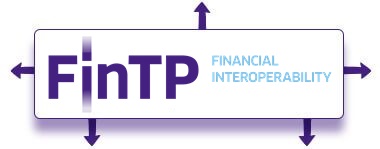Accounting reconciliation
Accounting reconciliation is either a stand-alone product or an optional feature of FinTP. It provides automatic or manual accounting reconciliation between NOSTRO/VOSTRO accounts. It offers intraday liquidity reports and integrated exception management, applying machine learning for exceptions to maximize automatic reconciliation.
- Ledger vs. statement reconciliation (NOSTRO)
- Payments vs. statement reconciliation (VOSTRO)
- Automatic or user-driven reconciliation
- Intraday liquidity reports
- Investigation features
Rich set of reporting templates for a thorough operations control.
Liquidity reporting
The Liquidity Reporting feature, part of Allevo’s FinTP suite, ensures real-time cash reports and forecasts using several reporting criteria, in a consolidated view.
The real-time liquidity reporting is performed at geographical level (on each branch) or at business level (on operation type). It also provides forecast management and can compare forecasts with the real status of payments and collections.
Transaction mirroring
The Transaction Mirroring feature mirrors financial transactions between two platforms (production and back-up), ensuring data integrity, consistency and operational continuity in geographically separated locations. The solution embeds real-time resilience at transaction level, based on message persistence in queues.
Competitive reports
The Competitive Traffic Reports is a feature that generates monitoring reports of message traffic in relation with correspondent banks, based on the ordering or beneficiary bank, transaction type, communication channel or message type, resulting in a competitive analysis of the traffic participants. The feature also provides alerts if events that deviate from the standard behavior of an indicator are detected.
Duplicate detection
The Duplicate Detection feature allows detection of possible duplicate messages and early alerting for further investigations.
The option is configurable at each implemented business flow level: e.g. credit transfer outgoings, return incoming transactions, payments requests instructions etc.
SWIFT gpi
TARGET2
ACH
RTGS
GSRS
Correspondent banks
Corporate to bank
Instant Payments
Native ISO 20022
The internal format used by FinTP is ISO 20022
SWIFT FIN
SWIFT MX
SEPA
The SEPA (Single Euro Payments Area) functionality accommodates the SEPA Credit Transfer (SCT) and SEPA Direct Debit (SDD) payment flows for both payments in RON or EUR.
Proprietary
FinTP can process any proprietary format, as long as it can be parsed.
Credit transfer
The Credit Transfer feature ensures the processing of low value RON denominated payment instructions (credit transfer) corresponding to the operational flows required by the clearing&settlement systems (ISO20022 formatted messages).
Direct debit
The Direct Debit feature ensures the processing of RON denominated direct debit operations and related instructions corresponding to the operational flows required by the clearing&settlement systems.
Debit instruments
The Debit Instruments feature ensures the processing of debit instruments instructions denominated in RON corresponding to the operational flows required by the clearing&settlement systems (proprietary xml formatted messages, associated images and meta-data).
Securities
Embedded single and multiple funds transfer instructions and settlement and reconciliation messages for securities.
FX/MM
The FX/MM feature, part of Allevo’s FinTP suite, performs the automation of treasury flows, of interbank loan or deposit confirmations or of interbank foreign exchange & money market operations.
Instant payments
The Instant Payments feature ensures 24/7 automated processing (STP – Straight Through Processing) of the SCT Inst (SEPA Credit Transfer Instant) payment instructions, corresponding to the clearing performed by the various available local or European systems (Romanian ACH, TIPS, RT1).
Statements
The Statemens feature processes instructions associated with the correspondent bank accounts management: statements for Nostro/Vostro accounts, debit and credit confirmations. Moreover, the feature automatically extracts relevant data from incoming/outgoing instructions in order to build various types of business reports.
Processing
FinTP provides technical integration for back-office applications, message conversion to / from various formats, message routing and monitoring.
Operational risk containment
FinTP provides various features that contribute to the banking operational risk containment, such as: accounting reconciliation, duplicate detection, transactions filtering, competitive alerts.
Filtering
FinTP provides message filtering capabilities with detection of possible money laundering transactions against any type of sanctions lists, for both high and low value payments – various types of instructions and formats, such as: MTx, ISO 20022, proprietary structures (CoreBulkCreditTransfer), other instructions corresponding to financial instruments like cheques, bills, promissory notes, etc.
Resilience
FMA is Allevo’s solution for mirroring transactions between the production and backup platforms, ensuring business continuity, data integrity and consistency. FMA provides real-time resilience at the transaction level, based on the message persistence in IBM WebSphere MQ, as well as a high degree of virtualization, which contributes to saving on important resources.
Benchmarking
Performance reports useful to infrastructure architects. This tool assists technical teams in investigating performance issues and in validating a combination of deployment architectures (hardware and software) and operational architectures (different flows and configurations).
Flow automation
The main role of FinTP is to achieve automation of business, operational or technical flows. Embedded message routing mechanism, with two routing modes: based on rules and on content.
Validation
Support for message transformation, validation and error handling.
Alerts
Alerts or early alerts can be configured for any events: possible duplicates, exception events for monitored communication channels, standard deviation or behavioral changes (competitive alerts).
Tracking
All transactions are logged and can be traced back. The search capability allows easy identification of a transaction for investigation purposes.
Performance monitoring
The system is being audited and monitored to ensure best performance.
Integration
Technical integration between different business applications, including connectors for back-office systems and various internal applications (HR, loan management, credit scoring, factoring etc).
Enrichment
The original content of any transaction is persistent within the application. The original content is never changes. All transactions are enriched with status information: source or destination application, timestamp, updated status, possible duplicate flag, possible fraud flag etc. This additional information is used mainly for tracking and reporting.
Persistence
FinTP by design ensures persistent end-to-end transactions. It features multi-threading capabilities and error detection and recovery mechanism.
Investigation
This feature is useful to admins or operators for investigation purposes.
Automated testing
It is a tool designed to make the testing process more objective. Its main purpose is to assist and help people involved in the test and validation process, providing fast and complete checks of the application:
– after the initial installation in the customer’s environment;
– after configuration changes;
– after the installation of major releases or patches, also known as regression testing;
– after extending the product with new features.
It is built as a collection of modules that can be used on their own to test certain business or technical functionalities. The automated testing is performed:
– in different deployment architectures;
– for different versions of prerequisites;
– for different technical interfaces with other applications;
– for custom configurations.
Error: Contact form not found.
FinTP FOR BANKS
FinTP for banks connects back-office, core banking or other internal bank systems with external networks, market infrastructures or distribution channels. It ensures STP (straight through processing) and integration between these proprietary and usually non-interoperable applications.
The core functions are flow automation, processing various types of message types, validation, reconciliation, resilience, persistence. It then offers a rich set of business and technical functionalities, aimed to accommodate needs of bank operators, regulatory requirements, audit policies or end customers.
FinTP performs routing and processing of messages between financial institutions, achieving cross industry interoperability. FinTP helps business customers consolidate their financial and treasury operations. It also helps retail chains reconcile and settle available stock with registered sales.
FinTP and all ancillary documentation is distributed freely and openly through the FINkers United community and it provides collaboration ground for rapid development and integration of new technologies, such as crypto currencies, biometric security, data analysis algorithms. This creates an open infrastructure for achieving real-time payments and a better management of liquidity and assets.










